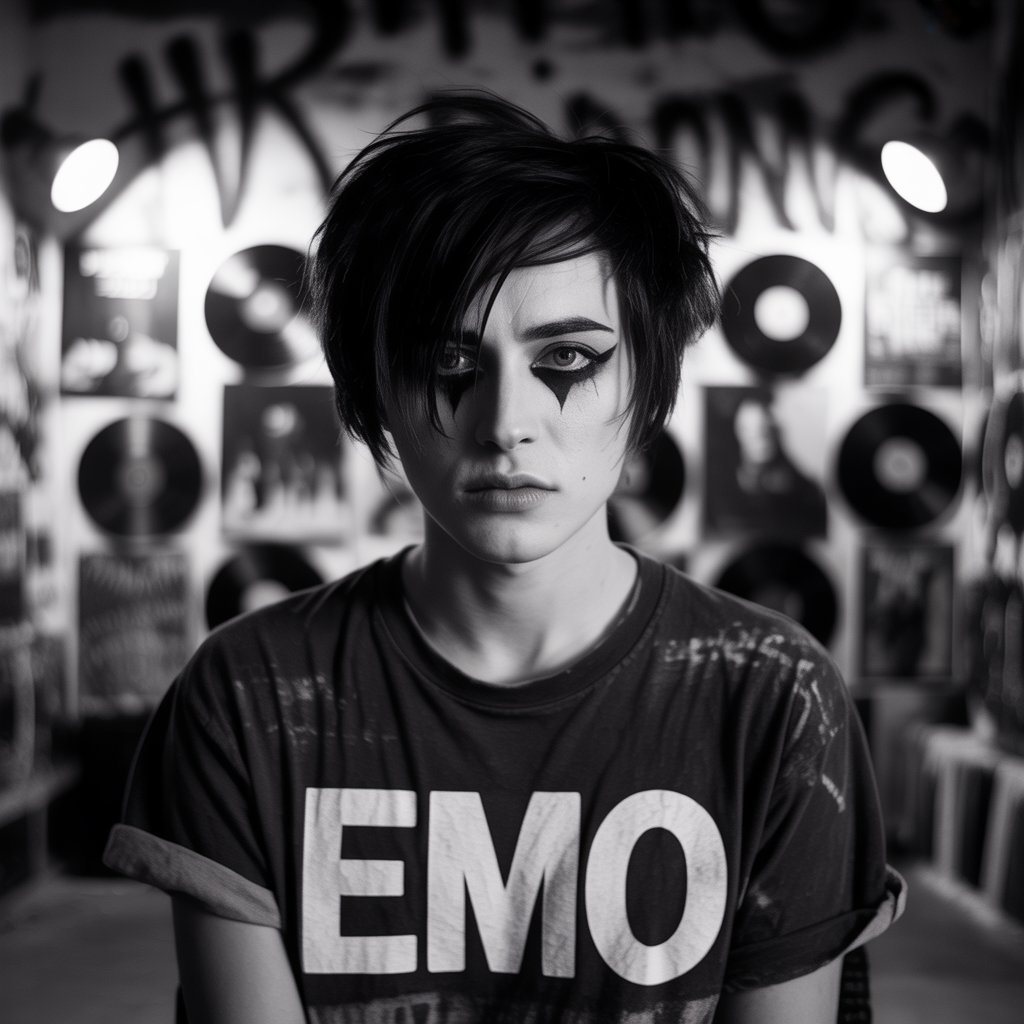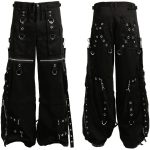The Ultimate Goth Guide: How to Dress as Goth, Punk, and Emo

Goth, punk, and emo may appear different at first glance, but in reality, they are closely connected subcultures. Think of them not as separate islands but as overlapping circles within a cultural Venn diagram. Each one traces its roots back to music — punk with its furious guitar riffs, goth with its haunting atmospheres, and emo with its deeply emotional lyrics. Music not only shaped their sound but also created the blueprint for how these subcultures dress and express themselves.
Punk exploded in the late 1970s as a rebellion against political conservatism and economic struggles. Out of its ashes rose goth, a slower yet darker style influenced by post-punk experimentation and cinematic aesthetics. Emo emerged later in the 2000s, channeling themes of identity, grief, and youth culture in the digital age. These styles overlap constantly — goth borrowed punk’s rawness but infused it with Victorian elegance, while emo carried punk’s emotion but added theatrical flair. To dress in these styles is to wear history itself — every ripped fishnet, leather jacket, and studded belt reflects decades of rebellion and creativity.
A History of Goth
The goth subculture began in the late 1970s and early 1980s, branching out from punk rock. While punk was aggressive and political, goth leaned toward melancholy and atmosphere. Bands like Bauhaus, The Cure, and Siouxsie and the Banshees created music full of haunting vocals and dark guitar tones.
Fashion mirrored this mood: flowing black clothes, lace, velvet, fishnets, and dramatic makeup. By the 1990s, goth had reached mainstream culture through films like The Crow and Beetlejuice, and icons such as Marilyn Manson amplified its theatrical side. Over time, substyles emerged — Romantic Goth, Cyber Goth, and even Pastel Goth — but all carried the same DNA of dark self-expression.
How to Dress Goth
Dressing goth often starts with black clothing: jeans, skirts, or layered dresses paired with corsets, long coats, or band tees. Accessories like chokers, spiked cuffs, or ankh necklaces add to the look, while makeup often includes pale foundation, dark eyeliner, and bold lips. Platform boots and fishnets are staples, creating a balance of mystery and defiance.
Cyber Goth
By the late 1990s and early 2000s, Cyber Goth emerged, combining traditional goth’s dark aesthetic with futuristic influences from cyberpunk and electronic music. Neon colors, reflective accessories, and industrial-inspired clothing defined this style. Think platform boots, goggles, cyberlox hair extensions, and UV-reactive clothing — a vibrant, high-energy twist on traditional goth fashion.
Punk – Raw Rebellion
Punk was born in the mid-1970s as both a musical and cultural rebellion. Bands like The Ramones, The Sex Pistols, and The Clash shaped its identity with fast, loud, and raw music. Punk fashion is unapologetically DIY: ripped jeans, plaid pants, band tees, denim or leather jackets with pins and patches, and combat boots. Hairstyles like mohawks and brightly dyed spikes became punk’s signature. The style was less about polish and more about attitude — a defiant rejection of the mainstream.

Emo – The Emotional Edge
Emo developed in the mid-1980s as an offshoot of punk, focusing on raw emotions and vulnerability. By the 2000s, bands like My Chemical Romance, Fall Out Boy, and Panic! At the Disco had brought emo into the mainstream. Emo fashion became iconic: skinny jeans, side-swept hair covering one eye, band tees, studded belts, and Converse or Vans sneakers. Makeup often included eyeliner, while hoodies and layered accessories reflected the emotional yet stylish vibe.
Goth and Emo Difference
Many people confuse goth and emo because both subcultures embrace dark aesthetics, but they are distinct. Goth and emo difference lies primarily in mood and expression: goth emphasizes mystery, elegance, and romantic darkness, while emo focuses on personal feelings, emotional struggle, and youth identity. Goth fashion often includes Victorian and medieval influences, while emo favors skinny jeans, band merch, and casual streetwear.
Goth Style vs Emo
When it comes to goth style vs emo, goth is theatrical, dramatic, and rooted in timeless aesthetics, while emo is modern, casual, and connected to youth culture of the 2000s. Goth music is haunting and atmospheric, whereas emo music is emotional and confessional. Both are powerful forms of self-expression, but each speaks to a different emotional language.
The Legacy Lives On
Today, goth, punk, and emo continue to evolve. Thanks to nostalgia, social media, and fashion cycles, all three subcultures remain relevant. Band tees, platform boots, and ripped jeans are now celebrated as vintage cool, while younger generations remix them into new forms of style. Whether you’re drawn to goth’s dark romance, punk’s raw rebellion, or emo’s heartfelt flair, these styles remind us that music and fashion are inseparable — each outfit tells a story of culture, history, and identity.
Recent Posts
Categories
Related Articles
Ultimate Style Guide: Emo & Pop Punk Fashion with Black Emo Pants and Tripp Pants
Emo and Pop Punk aren’t just music genres—they’re entire lifestyles. From dark,...
ByemopantsOctober 6, 2025The Famous 2000s Emo Fashion — Is It Back with Emo Pants?
The 2000s were iconic for many reasons, but nothing defined that era...
ByemopantsOctober 6, 2025What It Really Means to Be Emo: Style, Culture & the Power of Emo Pants
Emo isn’t just a genre of music—it’s a way of life, a...
ByemopantsOctober 6, 2025Free Music Festivals in California & The Perfect Vibe with Emo Pants
California is more than beaches, palm trees, and Hollywood stars—it’s also home...
ByemopantsOctober 6, 2025
















Leave a comment